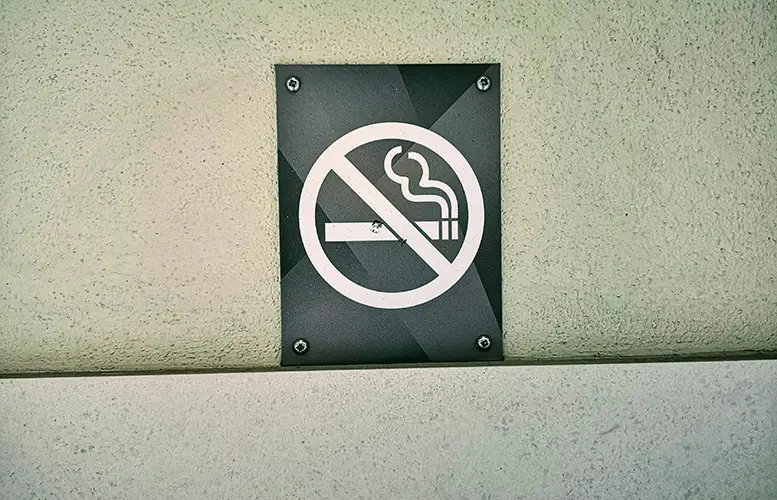Quitting smoking is one of the most challenging yet rewarding decisions a person can make. Cigarettes are a physical addiction to nicotine and a deeply ingrained psychological habit tied to routines, stress, and even social identity. For decades, millions of smokers have struggled with the cycle of quitting and relapsing, often feeling trapped by cravings and withdrawal symptoms.
The good news is that quitting is possible, and countless individuals have successfully broken free from tobacco. Success often comes from a combination of preparation, evidence-based methods, emotional support, and persistence. Understanding the nature of addiction and applying structured strategies can transform the journey into one that feels manageable and ultimately life-changing. Below are key strategies and insights that can help smokers take control of their health and finally leave cigarettes behind.

Understanding the Nature of Nicotine Addiction
Nicotine is a highly addictive substance that affects both the body and brain. It stimulates the release of dopamine, creating feelings of pleasure and relief. The brain adapts, requiring more nicotine to achieve the same effect and reinforcing dependence.
But nicotine addiction is not just chemical; it’s behavioral. Smokers often link cigarettes with certain activities, such as drinking coffee, driving, or socializing. These associations become powerful triggers that make quitting harder. Recognizing that smoking is both a physical and psychological habit helps explain why a multi-faceted approach works best.
Exploring Alternatives and Nicotine Replacement Options
One effective way to begin the quitting process is to consider alternatives that ease withdrawal symptoms. Nicotine replacement therapy (NRT) products, such as patches, gum, and lozenges, provide controlled doses of nicotine without harmful tobacco smoke. These products can double the chances of quitting successfully when combined with behavioral strategies.
Some smokers explore smokeless alternatives. From velo snus to other nicotine pouches and oral products, options exist that deliver nicotine without combustion. While not entirely risk-free, these tools may serve as transitional steps for those struggling to quit cold turkey. It’s important to use them responsibly and ideally under professional guidance, with the goal of gradually reducing nicotine dependence altogether.
Setting a Clear Quit Date
Preparation is one of the strongest predictors of quitting success. Choosing a quit date gives smokers time to plan, build support systems, and mentally prepare for the change. Some people prefer significant dates, such as birthdays or the beginning of a new year, while others choose ordinary days to avoid added pressure.
In the weeks leading up to the quit date, it’s helpful to remove smoking triggers, such as ashtrays and lighters, from the home and car. Stocking up on healthy snacks, water, and oral substitutes like sugar-free gum can help manage cravings once the day arrives.
Building a Support Network
Support from others plays a vital role in staying smoke-free. Quitting is easier when family, friends, and coworkers provide encouragement and understanding. Sharing your quit plan with loved ones builds accountability and reduces feelings of isolation during cravings.
Support groups, whether in person or online, can make a difference. Connecting with others who are facing the same challenges creates a sense of solidarity and offers practical tips for handling tough moments. Many people benefit from counseling or coaching, which can provide personalized strategies and motivation.
Managing Cravings and Withdrawal Symptoms
Nicotine withdrawal symptoms typically peak within the first few days after quitting and can last several weeks. These symptoms may include irritability, restlessness, headaches, and strong cravings. Knowing what to expect helps reduce anxiety when these challenges arise.
Practical strategies for managing cravings include:
- Drinking water slowly to occupy the hands and mouth
- Practicing deep breathing or mindfulness to calm the mind
- Engaging in short bursts of physical activity, like walking or stretching
- Distracting yourself with hobbies, reading, or calling a supportive friend
Understanding that cravings pass within minutes, even if they feel overwhelming, helps smokers ride them out without giving in.
Identifying and Avoiding Triggers
Triggers are one of the biggest challenges in quitting smoking. These are situations, people, or emotions that prompt the urge to smoke. Common triggers include stress, social gatherings, alcohol consumption, or even finishing a meal.
To reduce relapse risk, smokers should identify their personal triggers and plan strategies to manage them. If stress is a major trigger, replacing cigarettes with relaxation techniques like yoga, meditation, or journaling can be effective. If social settings cause temptation, bringing a substitute like flavored water or a stress ball can help manage urges without feeling left out.
Incorporating Healthy Lifestyle Changes
Quitting smoking often opens the door to broader lifestyle improvements. Exercise is particularly powerful because it reduces cravings, improves mood, and helps repair lung and cardiovascular health. Even light activities like walking or cycling can make a significant difference.
A balanced diet supports recovery by replenishing nutrients depleted by smoking and reducing the likelihood of weight gain. Foods rich in antioxidants, such as fruits and vegetables, help the body repair damage caused by tobacco toxins. Drinking more water flushes out nicotine and reduces withdrawal discomfort.
Considering Professional Help and Medication
Quitting smoking is challenging, and while many people try to quit on their own, professional support and medical treatments can dramatically improve the chances of success. Several prescription medications have been developed specifically to help people overcome nicotine addiction. These treatments work by targeting the brain’s response to nicotine, reducing the severity of cravings, and easing withdrawal symptoms that often lead to relapse.
Two of the most widely prescribed medications are varenicline (Chantix) and bupropion (Zyban). Varenicline works by partially stimulating the nicotine receptors in the brain, providing enough of a dopamine release to reduce withdrawal discomfort while blocking nicotine’s full effect if a person smokes. This dual action makes cigarettes less satisfying, which helps break the cycle of reward and craving.
Preparing for Relapse and Learning From It
Relapse is a common part of the quitting process, and it should never be seen as the end of the journey. Many people who are now successful ex-smokers went through several quit attempts before they stopped for good. Instead of thinking of relapse as failure, it is far more productive to view it as a stepping stone, a moment that offers valuable insight into what strategies are working and where adjustments are needed.
The first step after a relapse is reflection rather than self-criticism. Smokers should ask themselves: What situation led me back to smoking? Was it stress, social pressure, or a specific environment? Identifying the circumstances helps highlight personal triggers that may not have been fully addressed. For instance, a stressful day at work might reveal the need for stronger coping strategies, while a night out with friends could show the importance of preparing responses for social situations where others are smoking.
Once the trigger is identified, the next step is to adjust strategies for the future. If stress was the cause, building a stronger toolkit of relaxation techniques, such as deep breathing exercises, journaling, yoga, or physical activity, can help prevent similar relapses.
Understanding the Benefits of Quitting
The benefits of quitting smoking are both immediate and long-lasting, motivating at every stage of the journey. Remarkably, the body begins repairing itself within minutes of the last cigarette. Within just 20 minutes, heart rate and blood pressure start to drop, relieving some of the strain on the cardiovascular system. After 12 hours, carbon monoxide levels in the blood return to normal, allowing oxygen to circulate more efficiently and reducing the risk of oxygen deprivation in vital organs.
In the days that follow, changes become even more noticeable. Within two to three days, nicotine is eliminated from the body, and many people begin to regain their sense of taste and smell. Food tastes richer, aromas become sharper, and everyday experiences feel more vibrant. By two weeks to three months, circulation improves significantly, physical endurance increases, and lung function begins to recover, making activities like climbing stairs or exercising easier.
The benefits continue to build over the months. Between one and nine months, coughing and shortness of breath decrease as the lungs repair cilia, the tiny hair-like structures that help sweep out mucus and debris.
Maintaining Long-Term Commitment
Staying smoke-free is not just about getting through the first week or even the first year; it is truly a lifelong commitment. Even after years without cigarettes, certain situations, environments, or emotions can unexpectedly trigger the urge to smoke. A stressful day at work, being around friends who still smoke, or even visiting a place tied to old habits can reignite cravings. Recognizing that these triggers may resurface and preparing for them is key to long-term success.
Healthy coping strategies remain vital even after the physical nicotine addiction has diminished. Techniques like deep breathing, exercise, or engaging in a favorite hobby can provide positive outlets when stress or temptation arises. Many ex-smokers keep simple tools, like chewing gum, stress balls, or a water bottle, on hand as a reminder of the strategies that helped them in the early days of quitting. These small practices reinforce resilience and help prevent relapse during unexpected challenges.

Quitting smoking is not easy, but it is one of the most rewarding decisions a person can make for their health and quality of life. The journey requires preparation, persistence, and a willingness to adapt strategies along the way. From understanding addiction and exploring alternatives to managing cravings and embracing healthier habits, every step contributes to long-term success.
With the right mindset and resources, breaking the smoking habit is entirely possible. Each day smoke-free is a victory, and with time, those victories add up to a healthier, stronger, and more empowered life.





